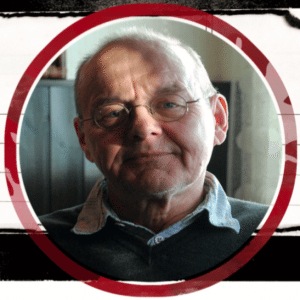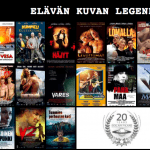I’ll never forget those moments, but it’s possible I remember them wrong
Rampe Toivonen, Solar Films 1997-2013
January 1997. I had been the editor-in-chief of “7 päivää” magazine and had been recently fired. Now I can say; the best possible thing at that stage of my career, with the benefit of hindsight.
I went to the local service station to refuel my company car and bumped into Sakke Järvenpää. I had just been doing business with him, in regard of the fifth anniversary of the magazine.
“Speak of the devil. Forget the party”, said I. “I was fired five minutes ago.”
“Oh shit”, said Sakke. “You should give Markus a call.”
I knew Markus well; I first met him in the early 80’s when I was the managing editor of the evening paper Ilta-Sanomat. Our co-operation went on as I was changing jobs. As I was pumping fuel, I used my free hand and called Markus.
“Come to work for us”, said Markus and apologized that he’s too busy to go into details. The police had just pulled him over for speeding. The officers found out that he had a few unpaid speeding tickets and Markus was escorted to the Police Station.
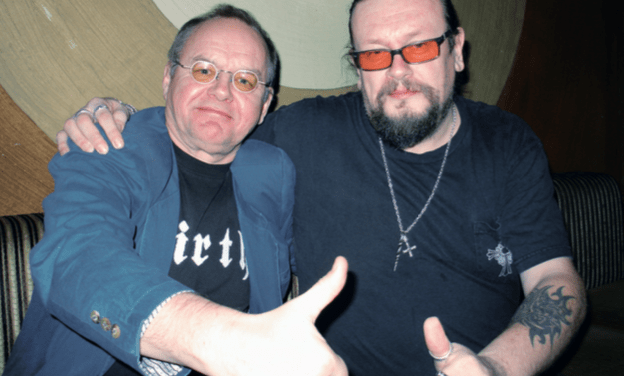
A few days later I went to the Solar Films office, to talk about the details. Markus never mentioned my possible employment to Antti Jokinen – but said it wouldn’t be a problem. Antti was directing a drama series “Under The Star Lantern”, written by Kata Kärkkäinen, one of the first productions in the history of Solar Films.
It was obvious that a stone-faced slow talker would create contradictory opinions.
The owners of the company were Markus, Antti and Taina Saikkonen, who had designed the new office space and was ruling her realm in a sovereign manner of a drama queen. Also on the payroll; Mika Karttunen, a jack of all trades, both in the office and in various capacities in different productions. To the best of my memory, he was also in charge of the salaries cause he asked me how often I wanted to get paid.
Before my first working day another newcomer started in Solar; Pinka Hämäläinen, these days the CFO. It took me a few years to understand why Markus had referred to Antti’s approval when he hired me. Markus made all the decisions like a dictator and 100 % of the office routines were handled without the involvement of Antti the Artist.
But all my questions were answered one day, at the long conference table at the Solar office. A small group of sales-oriented marketing missile kids had waltzed in, with a revolutionary idea related to the cell phone industry. The actual “idea” has faded from my memory. It was a weekly routine to witness those flexible rubbernecks, trying to sell Markus their brain-dead concepts about “how to make money”.
In the middle of the vivid meeting Antti shuffled in – not an everyday procedure – and he happened to be relatively intoxicated. Antti sat at the other end of the table and listened to the mumbo-jumbo for a while. Then his big fist came down:
“God damn it, I’m the CEO of this company and I wasn’t informed about this meeting. This ends right here and now!”
That was a great end to that conference – and it dawned on me that Antti was indeed the managing director.
The interview went down like the real McCoy and Jarmo was mistaken for the big winner.
The launching of the new TV channel 4 (Nelonen) was a big break for Solar Films. I landed in Solar by chance – but to Markus and his plans, the new channel was a lucky strike.
The new channel started on the first of June 1997 and Solar wanted to make as many marks as possible to the program chart. A new media, without its own productions – that was Solar’s big change to become a major player.
Markus’s previous company Harlin & Selin Productions had produced “Gladiators” to MTV3 in 1993-1994, based on an American format. The feature films “Born American” (1985) and “Sunset Riders” (1994) were also on Markus’s CV – the latter earned the Finnish Film Awards for the director Aleksi Mäkelä and Juha Veijonen, in the category of an actor in a leading role.
Markus had a lot of experience, a colorful reputation and an abundance of ideas – some of his own, some of his friends – for new TV programs. The door to his room was always open. (In the next office Markus gave up his room and established his reception at the end of a long table – where he still holds court. He attracted people like honey attracts bees – so, most of the employees abandoned their designated desks and started hanging out around Markus.)
HEADLINE POSTER OF THE DAY, WITH MR. HYTÖNEN
After my career in the evening papers and the yellow press, I had a reputation as a legendary headline poster writer. Markus seized this opportunity immediately. His first reaction was; let’s develop a program for Rampe for the new channel and call it “The Headline Poster of the Day”. The channel was excited and I spent my spring sending imaginary headlines to the management, trying to imply the nature of the upcoming show.
The biggest challenge was to find the host for the daily six-minute show. Our choice was Simo Rantalainen, who was approved by Jorma Sairanen, the recently appointed program director of Channel Four. Rantalainen had cut his teeth in the industry by hosting the acclaimed talk show “The Good, the Bad and the Ugly”, together with Jari Sarasvuo.
But his downside was having broken the jaw (slapping with an open hand) of the music editor of the evening paper Ilta-Sanomat, which is a part of the same conglomerate than Channel 4. When the name of the host was published, a storm of protest was immediate, leading all the way to the top management of the conglomerate. So, we had to cancel the appointment only a few weeks before the first show.
We created a news bulletin, claiming that Rantalainen was pursuing a career as a manager in professional boxing in Florida. I have no idea how many people believed in our smoke screen. We were in deep trouble and I already saw myself sputtering to the microphone – with a voice and a face far from television standards.
The salvation came from another newspaper, Helsingin Sanomat. Mattiesko Hytönen had started his career as a cultural editor, and was writing enormously popular columns to the Sunday issue. But his popularity was not shared by the management and he took a leave of absence for the summer, in order to host our show.
In the fall, when the program was continued, Mattiesko – a narcissistic personality – had to quit his newspaper career, to be able to appear on the screen. It was obvious that a stone-faced slow talker would create contradictory opinions. But the criticism disturbed no one. Mattiesko was not afraid of anyone or anything – and we were making shows day in, day out. No topic was sacred for us.
Besides me and Mattiesko, the crew was Olli Korpiala, the cameraman. He recruited Martti Sivonen to capture the sound. The editor (and the new cameraman after Korpiala got bored) was Kim Sainio, who has later created a remarkable TV career, just as Martti has. After Sainio, Ditte Uljas took over the camera duties.
My department was the ideas & topics, direction, location arrangements and supervising the edit. In the beginning we had Jari Komulainen making street gallup polls. Later Hantta Krause (Wilma Schlizewski) was conducting the interviews, but soon enough Mattiesko was left alone and had to carry the whole six minutes program time with his macho-lonesome-cowboy-style. We changed the name of the show to “Hytönen of the Day”. In 11 months we shot over 180 episodes; many of them memorable.
To support his reputation as a fearless warrior, Mattiesko agreed to do a bungy jump. And sure enough, he came down like a veteran.
AN UNFORGETTABLE MEMORY #1
In the summer of 1997 a man from Kirkkonummi scored the biggest lotto victory in Finnish history. Antti’s schoolmate Jarmo was hanging out in the office and we recruited him to come to Kirkkonummi with us. We set up our camera in front of the local mall; Mattiesko conducted the interview and told Jarmo about his “stroke of luck” and “a remarkable sum of money”.
Jarmo said that he’ll buy at least an ice cream – he hadn’t had time to think beyond that. The interview went down like the real McCoy and Jarmo was mistaken for the big winner – although the only money he scored was a 100 mark note from Solar Films (a reasonable amount of money in those days). The hoax was revealed at the end of the show, but most of the spectators missed that part completely.
AN UNFORGETTABLE MEMORY #2
Another scam was played at the Kaivopuisto beach in Helsinki. To support his reputation as a fearless warrior, Mattiesko agreed to do a bungy jump. And sure enough, he came down like a veteran.
Excited from the jump, Hytönen wanted to do it again and climbed up the crane, followed by the camera crew. Then we cut to an image of the platform, at the height of 300 feet. The jumper took off – and got loose from the bungy rope. An enormous splash! The jumper fell into the hard surface of the sea, out of control. No mercy for the audiences; the end credits started to roll. As the lifeless figure floated on the sea, the audiences started to scream and call the police.
However, the jumper wasn’t Mattiesko – but a zombie doll we had found at the prop store of Solar Films. Scruffy hair, high cheek bones, a square jaw – the puppet was a dead ringer of mr. Hytönen. We dressed him up in the trademark clothing of Mattiesko: black cowboy boots, black denims and a black leather jacket.
The spectators were relieved / disappointed to see Hytönen hosting the show the following evening, completely unharmed. Considering the events of the night before, he should’ve been black and blue from his bruises – or dead.
The same doll was used later (in a skiing outfit) in a local hospital, in order to figure out if an overdose of EPO hormons could be traced in the bones of the dead victim. The other patients waiting to visit the same medical expert didn’t seem to appreciate our particular style of journalism.
The third claim to fame for the doll was when Mattiesko shot the poor dummy with a shotgun, in his summerplace, in order to prove that a spray of pellets wouldn’t kill an escaping eco-terrorist who had attacked a mink farm. The doctor had no difficulties removing the projectiles from the “skin” of the dummy with a pair of tweezers.
The cadaver resembling a dead man was still considerably intoxicated.
AN UNFORGETTABLE MEMORY #3
This episode almost didn’t get made. Mattiesko can’t hold his liqueur well at all – he’s a two-pot-screamer. Tony Halme took advantage of this and managed to get our host blind drunk.
The following day; our morning meeting to plan the show of the day – and Mattiesko was nowhere to be seen. No answer on his cell phone. Luckily we had the concept ready; a known model had ditched her car the day before (DUI) and one of the passengers was injured. The manager of the model agency had agreed to grant us an interview, to be conducted in Turku in a few hours.
We packed our gear to the car and swung by Mattiesko’s home address. The truth was revealed as we peeked in though the mail box; the man was lying on the floor, face down. The doorbell and our loud screaming managed to wake him up (sort of): the cadaver resembling a dead man was still considerably intoxicated. Appearing on national TV in that state might’ve had consequences – so we had to use our plan B.
Hytönen, in a very delicate state, managed to get through the day with flying colors. He conducted the interview and claimed his drinking the night before was done on purpose, to prove the fact that driving (or working) condition on the following day was not to be taken for granted.
We sidetracked by the local police station, where Mattiesko took a breathalyzer test in front of the cameras. The result; two per mille at four PM. That was the end of our educational 6-minute lecture on the effects of alcohol. Memorable journalism, at its best.
STAR FACTORY WAS PURE SOAP
When we wrapped the drama series “Under The Star Lantern”, we started writing a daily soap opera for Channel 4, “Star Factory”. It was a direct hommage (spin-off) to “The Bold and the Beautiful”, one of the favorite programs of the Finns at the time.
The events took place in a record company and we had to get the show up and running fast. Aleksi Mäkelä started as the director – and two reporters from Helsingin Sanomat decided to bother him in the hectic early days of the shoot.
In his blunt manner Aleksi commented to the press that there is not even a trifle of quality in the series. It’s possible that he used the word “shit”. The journalist was overjoyed, to be able to publish such an honest opinion.
On the next day, I wrote a counterword to the newspaper, in Aleksi’s name. I claimed that Star Factory is an orthodox, stylized soap opera, pure and perfect in its genre. With his comments the director had tried to say that art and deeper meanings don’t belong in the soap genre.
Markus Selin, Antti Jokinen and Aku Louhimies also took their turns in helming the series. My contribution was to invent the titles to all the 111 episodes, in the best soapy operatic style.
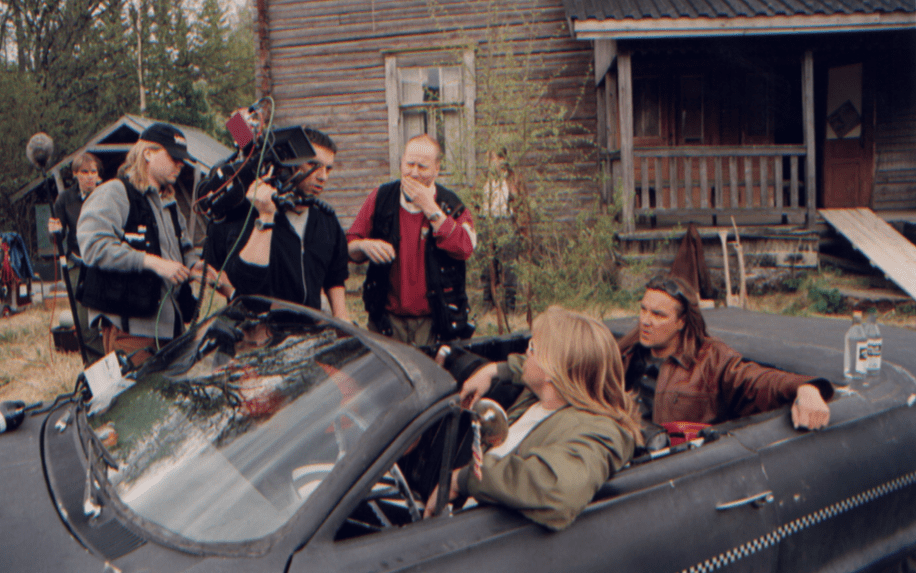
”PRODUCTION MANAGER PAYS THE PER DIEMS – THAT’S IT”
The first feature film of Solar was “The Goldrush” – which did well at the box office, like all Kummeli movies.
The next film was something completely different. “The Tough Ones” started the series of Solar Films hits – which still continues today. All Solar Films productions have not been blockbusters, but there has been one success almost every year. The unsurmounted pinnacles were “Bad Boys” in 2003, “Matti – Hell is for Heroes” in 2006 and “The Grump” in 2014.
“The Tough Ones” was shot in two parts in Kauhava. A few weeks in the spring of 1998 and a few more in September.
The original production manager of the movie was Mika Karttunen, but he jumped ship in the summer, to start organizing an international co-production “History is Made at Night” as the line producer. “History” was shot in Helsinki during the fall of 1998.
I was promoted to be the production manager of the autumn shoot of “The Tough Ones” and also, my job was later to supervise the post-production. I had no idea what a production manager was supposed to do and thought that by asking Karttunen, I’d learn at least something.
He gave me a long list of duties, a cash box and a bank card.
“The most important thing is to hand out money. You need a lot of it”, was his laconic summary. I took the cash box and the card with me to the shoot, but left the paper behind.
The per diems and the bookkeeping took a lot of time, but the duties of the production manager – like the list most likely would’ve – included everything. Absolutely everything.
I doubt if anyone else has been sent to be in charge of a six million mark (one million euro) production, just like that, out of the blue – but that’s exactly what happened in Solar. It was not customary to teach how things were done. You just had to do them, learn as you went along.
The director Aleksi Mäkelä remembers that to start with, I was completely at sea but “it all went well in the end”.
One thing from Kauhava I’ll never forget, was the visit of Kari Väänänen (a front-row actor). He had a remarkable supporting role that was shot in two days. After the wrap, we went out to town, to paint it red. In Kauhava, that was an every-night-routine.
The next day, Väänänen figured out that it’s OK for him to drive back home to southern Finland. I wasn’t quite sure and asked him to wait a bit. I called the Lapua police force to conduct a breathalyzer test. After that, the officer said to Väänänen: You better wait at least for four hours. That’s a good example of the duties of a production manager.
The biggest battles were fought over the posters – and the formula was similar than in the World Cup of Soccer, where Germany always wins. In Solar, Selin always wins.
“The Tough Ones” drew a lot of publicity before the premiere, for several reasons. It was a smash hit; during the opening weekend all theaters were chock-a-block full and the distributor ordered more copies for the following week.
After “The Tough Ones”, my main responsibility has been the press, the publicity and the PR. Besides that, I had other duties in film and TV productions for years, until the television department was detached to a separate unit.
The success of “The Tough Ones” laid the base of the superior marketing reputation of Solar – thanks to the movies that the media has found interesting, thanks to Markus Selin. My job as the publicist has been more like being the traffic cop, between the media and the talent.
The enormous publicity and the great amount of interest were always preceded by strong – and often megalomaniac – marketing campaigns. The stepmarks were always meticiously supervised by the producer – and often commented and corrected. The biggest battles were fought over the posters – and the formula was similar than in the World Cup of Soccer, where Germany always wins. In Solar, Selin always wins.
But not always. The poster of “The Bad Boys” was ready to go to print, when Markus realized that there’s a kitten in Lauri Nurkse’s lap.
“What the hell is the cat doing there?”, wondered the producer. “I ordered it”, said I. “Everything else is fine – but lose the cat”, said Markus, refusing to listen to any contradiction.
I decided to forget about it; the poster was printed.
The message and the concept of the poster have often been analyzed in public. Kalle Kinnunen will speculate the poster in his column later in this book. “I have heard an estimate that the kitten in Lauri Nurkse’s lap on the poster of “The Bad Boys” brought the movie 200 000 additional spectators more than it would’ve got otherwise. The cat sold the macho movie to young girls.”
Well, seemingly the pussycat and the bare, muscular upper bodies of the boys appealed to other target groups as well. The movie was invited to several Gay Cinema Festivals. In Holland, a local gay magazine gave the poster pictures two pages.
JUST MARRIED, FAMILY FEUD AND THE WEAKEST LINK
“Just Married”, an American game show, was the first Solar Films production based on a foreign format. The first host was Peter Franzén; after him Nicke Lignell took over. The most permanent effect of the show was the departure of Taina Saikkonen. During the pre-production Taina blew her top; the victim was Venla Mäkelä, who shouted back, second to none. Saikkonen walked out of the door and never came back.
“The Family Feud” (1999-2002) was the next format. We built our sets in Kerava and shot over 500 episodes of the game show. The formula was based on questions that a hundred people had correctly answered. A typical question could be: “Name a red fruit” and the competing teams had to guess, what was the most common answer. There were two five-member teams in the studio, families or workmates, and the winner proceeded to the next round. At the end of the season all the members of the overall winning team were awarded with a car.
My part was to create the bracket, to invent the questions needed (thousands), to interpret the answers based on the gallup and to be the head umpire of the competitions, from my sweaty-little-box-of-an-office. My partner was Jussi Heikelä, who was operating the big scoreboard that was built in India, behind the teams via a computer.
Nicke Lignell was the host and he had to listen to my instructions and inappropriate obscenities from his earpiece. The speed was horrific; we worked on Saturdays and Sundays, managing to complete 15 episodes every weekend.
An effort of similar proportions was “The Weakest Link” (2002-2005). Once again, thousands of questions were needed, with their multiple-checked answers, with zero room for ambiguity. I counted once that I had made over 5000 questions for the show. The hostess was Kirsi Salo, who was humiliating the competitors to her heart’s content, as the British format required.
In the heat of the hectic pace, all sorts of mishaps took place and it wasn’t easy to admit one’s mistakes.
As I had just made one error, the producer Petteri Ahomaa was shouting to my earphones: “What the hell is this, Rampe?”
A small pause – and then I managed to say: “I must admit, the question took me by surprise, completely”.
That was a proper highlight to my career in the TV productions of Solar. Ahomaa was recruiting more and more people, as more produtions were piling in. I stayed in the drama department, permanently – and the most colorful incidents happened on the PR tours of the movies.
My absolute principle has always been to run for one hour, every morning – regardless of the place or my condition.
LOUHIMIES AND THE PYRRHIC VICTORY
As the trailer of the sensationally uninhibited movie “Restless” came out, the media went wild with requests for interviews. The director Aku Louhimies cunningly advised me: “Urge them to ask the actors if the sex scenes were real?”
And then he added, piously: “I won’t answer that question”.
The slogan of the movie was chosen: “When nothing is enough”. My suggestion was made tongue-in-cheek: “I’m not fussy, it’s nice to get pussy”.
It was always a pleasure to cross blades with Aku, knowing that he will always have his way in the end. But sometimes it was a Pyrrhic victory, which gave me pleasure.
I was in the habit of publishing the screenplays of our movies in the Solar Films webpages, after the premiere. It was easy for people to download and read them. Aku couldn’t stop me publishing the script of “Restless” – because the screenwriter Aleksi Bardy was downright grateful, for not having to send the script to his film students.
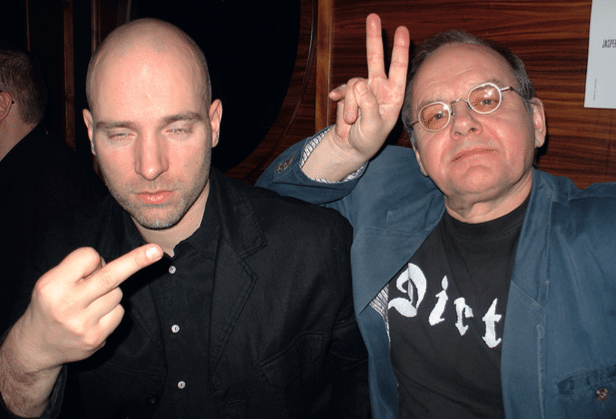
At the time of the next mutual production, “Frozen Land”, Aku told us that he owns one third of the screenplay rights and won’t allow the publication. I published it anyway, with the permission of the co-scriptwriter Paavo Westerberg – but Aku didn’t give up. Finally, our CEO Jukka Helle asked me to remove the script from the Internet.
I did as I was asked, replacing the screenplay with a button: “Order the screenplay from here” and a link to my e-mail. A few years later, I changed the link to re-route directly to the script. Aku won – but I didn’t feel like I lost. I’m sure that my friend Aku and I will have our productive contradictions also in the future. In this book is a picture he demanded to be removed from the Solar webpage. It is taken in a spa in Marrakech. The photographer sent the picture to Markus Selin – and it is by his direct order we’re publishing the picture right here and now.

THE SOUTH
The promotion tour of “The South”; we were checking in to a hotel in Tampere. After the press conference, the program included a gala premiere and a cocktail party.
Samuli Edelmann was booked for a radio interview, in the morning after the party. He stayed sober the whole night – which, back in the day, wasn’t easy for him.
In the morning he drove to the radio station and when it was time to leave for Helsinki, Samuli asked me:
“Can I keep the room and crash there for a few hours? I didn’t get much sleep last night.”
I approved and left for Helsinki, with the rest of the entourage. It took us a couple of days to get Samuli to the Helsinki gala premiere: he had started to drink in the solitude of his room and only Heikki Vihinen managed to get him out of there.
After that, Samuli has put the plug in the jug; not a drop anymore. In our later discussions he admitted that it wasn’t fun anymore; there was no joy in drinking. That was a good reason to quit. But his stories from the days when the drinking was still fun, are funny as hell.
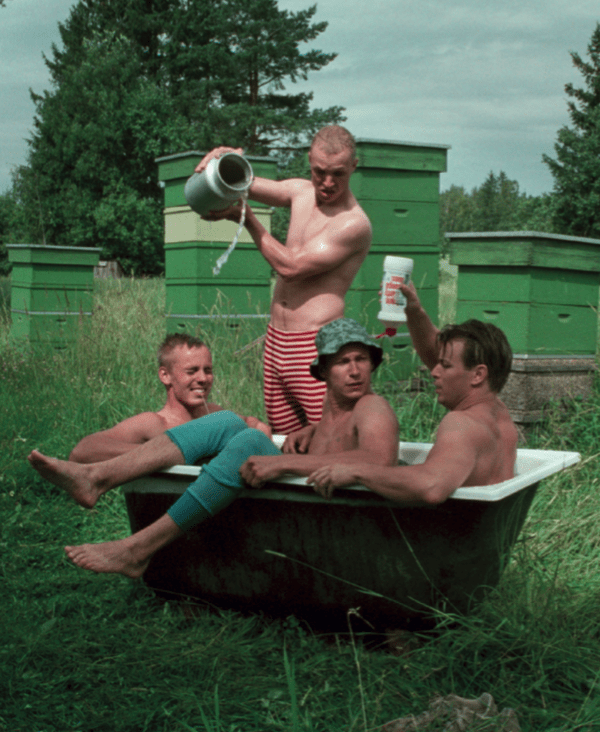
BAD BOYS
The movie of all times deserved the tour of all times. We were split in two promotional groups, touring the cities around Finland.
The time was January 2003. A major winter storm had swept over the country, burying everything is snow. Lauri Nurkse and I took off in my borrowed minibus, heading to the eye of the storm and towards Joensuu, the first destination of our tour.
At the end of our drive, we went through moments of sheer terror. The snowfall was outrageous, we couldn’t see anything – except the sudden appearance of the tail lights of a truck. The truck had slowed down, to turn in a junction. I hit the brakes – and nothing happened. We were gliding towards the truck like a sledge; at the very last second I managed to pull over to the right. The bus plunged into the deep snow, finally stopping under a bent traffic sign.
No damage done, but the car was stuck in the snow. Badly. Someone kindly pulled over, to borrow us a shovel – but the real solution came in the form of a man who went to get a tractor, from a distance of a few hundred meters.
We pulled the minibus back to the road. I noticed that it’s a bit too chilly inside the vehicle. The back side window was open. I tried to push it close, by using force. No luck. I asked the tractor dude to help me. “Do I dare to press it?”, asked he. “Yes”, was my answer.
He did what he was told and crashed the window to smithereens. We followed the tractor dude to his farm, where he taped a piece of cardboard on top of the broken window. During the tour, that cardboard became a holy place for messages and various pieces of writing. More and more slogans were scribbled as the trip went on.
Soon after the incident, I realized that it was an electric window. Shame on me.
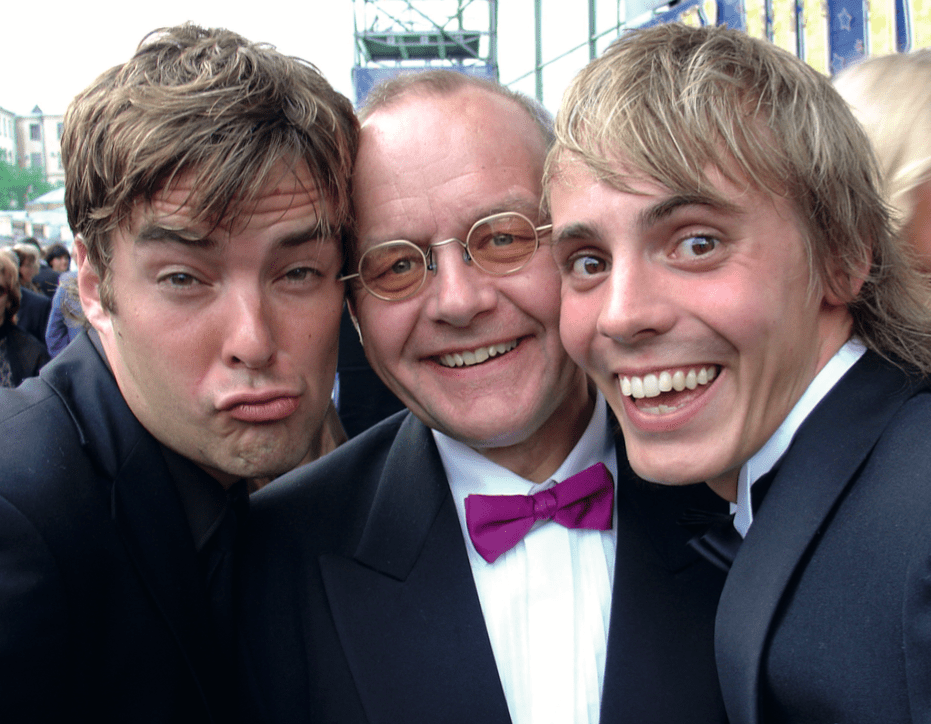
FROZEN LAND
The second Aku Louhimies movie for Solar Films wouldn’t have been the success it was, without the public disputes.
The director and the production company spent months arguing, who has the right for the final cut: the director or the producer. The outsiders were tempted to think that the whole show was just a marketing gimmick. But for us insiders it was a war; as serious as a heart attack. The lawyers were joining the negotiations; the threat of a major court case was hovering in the air.
As the result of the negotiations, the parties were bargaining about the scenes to be cut out. Both sides took one step back and the movie was finished. To celebrate the occasion, Markus took Aku and me for a Christmas porridge to the market hall in Hakaniemi.
An international producer’s cut was made later. It was supposed to enter the Cannes director’s series. But Louhimies managed to smuggle his version to the jury; the decision was to drop the movie, for being too long and too distressing.
“Frozen Land” was a landslide winner at the Finnish Film Awards and won four out or five awards at the Gothenburg Festival.
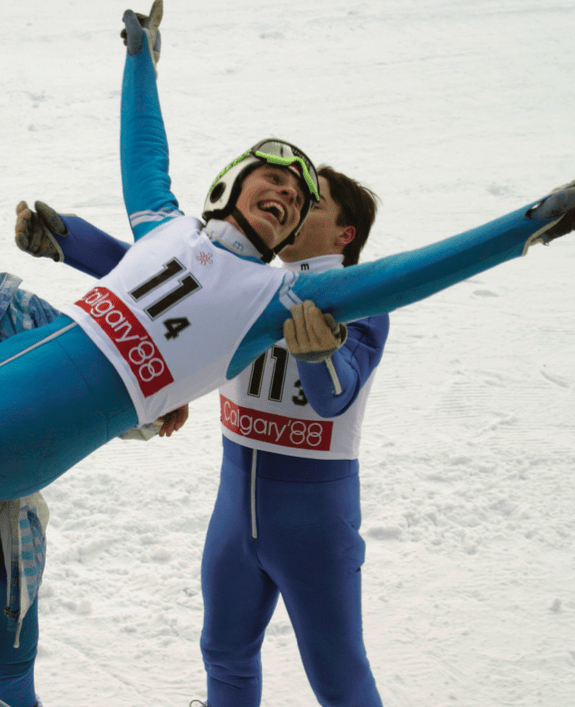
MATTI – HELL IS FOR HEROES
The movie was the brainchild of Aleksi Mäkelä and Jasper Pääkkönen; one of the key issues of the pre-production was not to let Matti Nykänen to take any part in it. As I had been dealing with him in the past, it was my responsibility to reach an agreement. It was finally accepted by his attorney-at-law Heikki Salo, on behalf of Matti. It was agreed that Nykänen would get a commission of the box office revenues and the condition was that he could’t take part in the production or the marketing, without the authorization of the production company.
It was an exciting moment, when we screened the final movie to Nykänen in the movie theater Maxim 2. I had even recruited a security guard, in case of a possible anger outburst. The end credits rolled, Nykänen walked to the lobby and shouted:
“Rampe, come to the toilet. I’ll give you a blowjob. A fantastic movie!”
The later escapades of Matti Nykänen created e.g. a rowdy YouTube hit from Oslo, where he was with Jasper Pääkkönen, to lay the groundwork for the upcoming Norwegian premiere. Nykänen slagged off the head coach of the Norwegian ski jumpers, badly.
He was also demanding per diems and I suggested the Norwegians to give him a formal sum of 100 crowns. And they did.
On the way back, Nykänen was blind drunk and realized at the airport that 100 crowns doesn’t equal 100 euros. He called me in the middle of the night: “Rampe, I’ll kill you!”
Jasper Pääkkönen was next to him, terrified.
Later, Solar paid the panicking Nykänen his share of the profits, as a swift payment – whatever was left after the tax man took its share to cover Matti’s tax debts.
Same afternoon, Nykänen bought an Audi in Jyväskylä – in cash.
The trip to Levi inspired the idea of a human pile. Someone shouted “Human pile!”. That was my cue; I threw myself on the floor and everyone else piled on top of me.
THE VARES SERIES
The decision of producing six Vares movies was such a major deal that it had to be published in the restaurant New Pharmacy, in Turku. The first setback happened at the railway station of Helsinki, where Juha Veijonen was a no-show. He didn’t make it to Pasila, either – very close to his place of residence in Käpylä.
Finally, Veijonen called me: “God damn it, I can’t get a taxi. I’ve been waiting for ages”.
We agreed that Veijonen would take a taxi to the Veikkola junction, where Jussi Lepistö would pick him up.
Miracuously, the plan worked and Veijonen showed up at the press junket on time. He was drinking only water at the table but went to the toilet all the time, with his backpack. An educated guess; it contained a collection of minibottles of brandy, to cure his shakes. The evening went on; Veijonen started to be witty and charming. He was happily telling a female journalist of the local newspaper about his character in the TV series “Taivaan tulet”: “I play a gynecologist who’s allergic to pussy”.
As remembered, he had to step down from the role of Vares and was replaced by Antti Reini.
Veijonen went to rehab and took a sick leave – but was disappointed when he didn’t get his role back in return.
GETTING LOST, PILES OF HUMANS AND BROKEN BONES
If you hear stories about the morning jogging of the writer, they’re all true. My absolute principle has always been to run for one hour, every morning – regardless of the place or my condition.
Once in Moscow, we were all sitting in a jacuzzi, at six in the morning. Suddenly I realized that it would be a good time to do the run now; we were scheduled to leave in the afternoon.
I asked if Jouni Mutanen would be kind enough to wait for me in the whirlpool. “I’ll go for a run and I’ll be right back”. “Of course I’ll wait”, said Mutanen and kept his word. We had at least one more, after my run, before turning in for a couple of hours.
The same afternoon, the check-in counter at the Moscow airport. Mutanen had half a bottle of vodka in his hands. That didn’t sit well with the local militia and they took Mutanen into custody. We were worried: the departure time was approaching fast. The saving grace walked through the door, in the form of Ville Haapasalo, who was a passenger on the same flight. He was sent to rescue Mutanen from the hands of the militia. When Ville finally found them, the interrogator was putting on a rubber glove, to conduct a body cavity search for Mutanen. But things changed when Haapasalo turned up; he was a major celebrity in Russia, already back then. The militia was happy to give Mutanen to Ville’s hands, wishing them both a safe flight. And it didn’t cost a ruble.
I ate some shit. It was nice. OK?
Once in Lahti, we were entertaining ourselves at an after-hours party in a hotel room. The name of the game was burning our chest hair; the participants were Peter Franzén, Aleksi Mäkelä and the writer. The hair was burning in bright flames, a terrible smell filled the room. When there was no hair left, I went for a run, with a terrible tingling pain on my chest.
Tallinn was not a familiar place for me when I went for my run. I took a risk and made too many turns. After a while, I didn’t have a clue where I was. Luckily I remembered the name of the hotel; the local police was happy to give me a ride back.

In London, I was running along the crowded streets for an hour. I found my way back by sheer chance and noticed that I had went out through a side door. Had I used the main door, I would’ve been in the middle of Kensington Gardens, every jogger’s dream.
During the years, Solar Films has organized several recreational trips. Some of the destinations have been Levi, Vierumäki and Warsaw.
The trip to Levi inspired the idea of a human pile. Someone shouted “Human pile!”. That was my cue; I threw myself on the floor and everyone else piled on top of me.
The record was made in the VIP booth of the “Hullu Poro Areena”. I was on the bottom, face down. The next ones on the pile: Jussi Lepistö and Aleksi Mäkelä. To my good luck both men are strong as a bull; they used their hands to ease off the 1000-kilo weight on top of me. Before the pile was dispersed, I almost lost my consciousness. My broken bones were healed with time. I have also broken my ribs twice, while bicycling to the office. Those two times have been my only sick leaves and I didn’t even take them. Colliding with a VW Passat, a van and a big garbage truck ended up even luckier for me. Once I fell like a missile when I hit a curb. A young woman came to give me a hand: I was actually hoping for a bit of mouth-to-mouth resuscitation.
WE DIDN’T GIVE A SHIT – OR DID WE?
The years in Solar can’t be desribed without mentioning the shit-related text messages. They were not even on the border of good taste. They were way below that.
It all started in the car, on one of our promotional tours. The actors were sitting in the back, answering my phone. There was no Bluetooth back in the day; I didn’t feel comfortable speaking on the phone while driving in slippery winter conditions. I think I’m speaking the Gospel truth when I say Jasper Pääkkönen started the craze. He punched a text message to my phone: “I ate some shit. It was nice. OK?”.
Then he started sending the message to a large, random group of names he found in the memory of my phone.
After that, everyone tried to hang onto their phones as if their lives depended on it, but it didn’t work. Jasper often managed to steal the phones from the table – or used some bullshit excuse to borrow them. The messages were flying – and getting more and more obscene. The recipients were no longer hand-picked – the messages were sent to everyone.
Antti Jokinen once replied from Los Angeles he’d join us immediately, if that was the menu. “My kind of party!”
He was the only one ever who replied positively, completely unreserved about the dubious messages.
When the ice was broken, everyone started doing the same prank. However, no one ever used their own phone – not to the best of my knowledge.
Poor me; I was sending out messages, apologizing, accusing those who had stolen my phone. I remember when Paula Koivuniemi called me, after receiving a typical message. She finally believed in my innocence and we are still friends.
Like many, many others, Amira Khalifa received messages from my phone more than once. She told me that her first reaction was surprise, then anxiety – but after a week, she started to feel a strange attraction to the world of the messages. “It could be interesting”, she thought.
In the case of Solar Films, there is no need to exaggerate or embellish. The truth and the legend are the same thing.
The messaging mania went on for years. The sudden death happened in Poland, at the 15th anniversary trip of Solar Films. The CEO left his phone at the dinner table; a repugnant message went out to everyone, including his children.
That was too much; we all realized that, immediately.
After that, the tours took one step towards more businesslike. The death of the poop-messaging was not the only reason. When you do six movies – and six tours – a year, the need to party isn’t necessarily the same than in the past, when we made 1-2 movies a year.
I can’t imagine calling a 10-minute break during a press conference anymore – so the director can throw up.
EVERY WORD IS TRUE
A lot of things happened during my seventeen years tenure at Solar Films. Occasionally I miss being there; we never had a dull moment. I have written down my memories in a good and sincere faith that they deserve to be told. A lot of stories are still untold, a lot of things have faded from my memory.
But one thing is clear in my mind. The principle of the journalist in the movie “The Man Who Shot Liberty Walance”, by John Ford: “When the legend becomes fact, print the legend”.
In the case of Solar Films, there is no need to exaggerate or embellish. The truth and the legend are the same thing.

